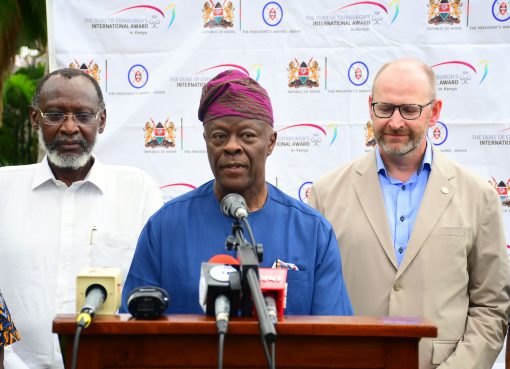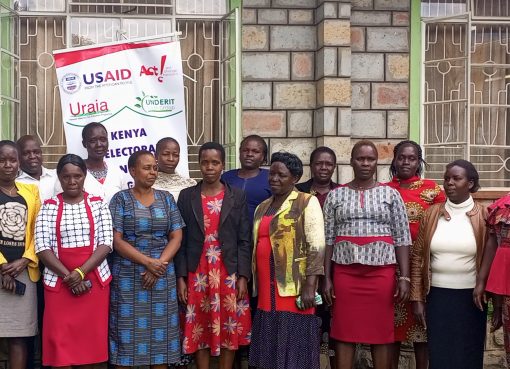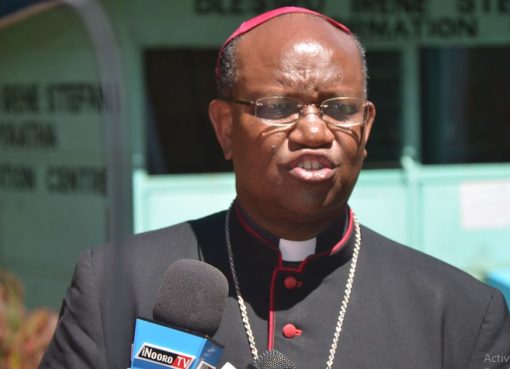Increased forest cover and environmental conservation are critical to enhancing our food security and achieving the country’s development goals as outlined in the Big Four Agenda and Vision 2030 goals.
It is for this reason that the Government embraces public-private partnerships as a firm foundation for accelerated development. Partnerships between and among key stakeholders and players require strengthening as well, much as it is a corporate social responsibility function.
This is vital in the realization of strategic objectives such as increasing tree cover and reversing forest degradation, promoting forestry as a business and increasing investments, adopting technologies, and integrating national values and governance in the forestry sector according to the National Forest Programme (NFP) 2016–2030.
The NFP (2016–2030) is the first cross-sectoral and multi-stakeholder national framework to coordinate forest development with the aim to meet the needs of Kenyans in the next 15 years.
On May 18th, 2021 a tree planting exercise was launched at the Wangari Mathai Institute of Peace and Environmental Studies while the other 8 campuses planted their set of trees concurrently with support from KFS and Equity branches.
Equity Group Foundation and Kenya Forest Service joined the University of Nairobi personnel in their annual tree planting exercise at a drive on 18th May 2021 to plant 7,000 trees at various campuses as they enhance efforts to mitigate against adverse effects of climate change.
The University of Nairobi (UoN), which plants trees annually as part of their environmental rehabilitation efforts received 5,000 seedlings from Equity Group Foundation and 2,000 seedlings from the Kenya Forest Service.
The 7,000 trees will be distributed across various campuses based on availability of space including; 2,000 trees at the Wangari Mathai Institute of Peace and Environmental Studies, 200 trees in the students’ halls of residence, 400 trees in the College of Biological and Physical Sciences, 500 trees in the School of Law, 200 trees in the School of Business, 700 trees within the UoN estates, 500 trees in the College of Health Sciences, 500 trees at the University’s Kenya Science Campus and another 2,000 trees at the College of Agriculture and Veterinary Sciences.
“As a university, we recognize that each of us has a big role to play in contributing to environmental conservation. What started out as a plan to plant 200 trees has been upscaled 35 times through our collaboration with Equity Group Foundation and Kenya Forest Service. We are proud to work with like-minded partners in this noble tree planting event and urge all Kenyans to plant a tree this rainy season.” said University of Nairobi Vice-Chancellor Prof. Stephen Kiama during the launch of the initiative.
The 7,000 trees are estimated to cover at least 5 hectares of land and is a mix of indigenous and fruit trees. A preference selection made based on their ability to survive longer, their resistance to diseases and the low cost of maintenance.
“By planting trees today, we are securing the future, lives and livelihoods of our children and their children. Equity Group Foundation focuses on promoting the conservation of natural resources through expanding forest cover, improving water security and providing renewable energy and energy sufficient technologies as smart alternatives to traditional and polluting energy sources.” said Polycarp Igathe, Equity Group, Chief Commercial Officer.
As of April 2021, Equity had planted over 4 million trees and distributed 260,000 clean energy products through EGF’s Energy and Environment Pillar and are set to plant another 5 million trees through its branch network of 190 branches by the end of year.
“We have tasked each Equity branch to collaborate with KFS, the communities and institutions around them to plant trees and achieve this target. We shall also be adopting more forest blocks for rehabilitation and working with communities to reduce reliance on forests as a source of wood-fuel and adopt agroforestry,” added Polycarp.
Kenya Forest Service Chief Conservator of Forests, Julius Kamau speaking at the event said, “Today is a testimony that when the public and private sector come together, this can be for the greater good of the community. We are making a call to action to all Kenyans to join us in this initiative, let us take advantage of the long rains to each plant one or two trees as this will take us closer to the 10% forest cover.”
Equity Group has partnered with Kenya Forest Service (KFS) in their 35 million trees, tree planting initiative. KFS will provide technical support including; the identification of hotspots that require urgent tree cover and/or rehabilitation of degraded forests; mapping out agro-ecological zones and identification of suitable tree species for planting; identification of high-quality tree seedlings stocks across the country; and support by KFS officers and staff at local levels to supervise the proper planting and maintenance of the trees.
“Planting 7,000 trees in an urban area in one morning is no small feat. We are keen on having a good success rate for the trees that we have planted today by ensuring that these are nurtured to maturity. We appreciate both Equity and the University of Nairobi for taking the bold step to be active players in the conservation of Nairobi’s eco-system,” added Mr. Kamau
The Constitution requires that at least 10% of land area be under tree cover to conform to the current international requirement. The Ministry of Environment and Forestry has a target of growing 1.8 billion trees by 2022 as directed by President Uhuru Kenyatta so as to achieve the goal of increasing the country’s forest cover from the current 7.2 per cent to the globally accepted 10 per cent cover.
The forest sector in Kenya contributes about Kshs7 billion to the economy and provides a lot of employment opportunities. Most of the country’s economic sectors rely on environment-based resources for their sustenance. Being the country’s water towers, forests ensure adequate quality and quantity of water and are also sinks of greenhouse gases which contribute to climate change mitigation. The global recommended minimum forest cover for a country is 10% while Kenya’s is estimated to be at 7.4%.
According to the Green Economy Strategy Implementation Plan 2015 (GoK, 2015), the natural resource-related sectors contribute about 42% of Kenya’s GDP and 70% of overall employment. These sectors include agriculture, mining, forestry, fishing, tourism, water supply and energy.
The Constitution provides for a robust governance framework in the management of natural resources by the two-tier government system. Specifically, the Constitution stipulates devolution, equity in benefit sharing and sets a target of a minimum 10% tree cover.
The environment is connected to food self-sufficiency, manufacturing, and health. Well-managed forests have tremendous potential to contribute to sustainable development. Indeed, forestry can make a significant contribution towards meeting green economy objectives and promoting food security.
Forest development and climate change are intimately linked. Forests play an important role in carbon sequestration and in climate change mitigation and adaptation. Other benefits include the provision of products and services that people depend on directly or indirectly such as nitrogen-fixing, soil and water conservation, and provision of shade, fodder, fiber, and materials for construction.
Assuming that only the private sector can create sustainable job growth within forestry, thus performing a key role in creating employment, a favorable environment for private forest investments must be established for the available workforce to benefit and to avoid social problems.
Trees and forests form the basis of livelihoods, especially in areas with high population density and youth unemployment. The forestry sector has both a potential and an obligation to contribute to the creation of job opportunities for youth.
To reduce negative impacts on resources and prevent further degradation and deforestation, we must not only plant more trees but also protect existing forests. It’s time to switch things up a little bit. Changing the story, on the other hand, is more than just planting a tree; it’s about growing a tree in the right place.
We need to face the reality that Kenya’s climate is rapidly changing. The Fifth Assessment Report of the Intergovernmental Panel on Climate Change (IPCC) presented strong evidence that surface temperatures across Africa have increased by 0.5-2°C over the past 100 years. Kenya has experienced a general warming trend, reported as being about 1°C, or 0.21°C per decade. This temperature increase has been observed across all seasons, but particularly from March to May.
Forests are important for sustainable development. They provide the foundation for poverty alleviation, environmental sustainability, food security and agriculture, supply of energy and water, biodiversity conservation, and climate change resilience. Forests play a key role in Kenya’s environmental, social and economic contexts.
“Investment in sustainable management in the conservation of our forests is one of the most effective interventions to combat climate change in Kenya,” said the President when he was speaking at UNEP in Gigiri, Nairobi when he and French President Emmanuel Macron officially opened the One Planet Summit on March 14th, 2019.
President Uhuru Kenyatta also reiterated issues touching on the Kenya Cleaner Production Strategy 2000 that encourages resource efficiency and cleaner production in manufacturing.
“It embraces the “5 R’s” philosophy of Reduce, Re-use, Recycle, Reformulate, and Re-manufacture, cutting emissions into the environment to acceptable levels,” President Kenyatta said.
He said his administration had put in place several policy and legal instruments to control environmental pollution.
By Lydia Shiloya





